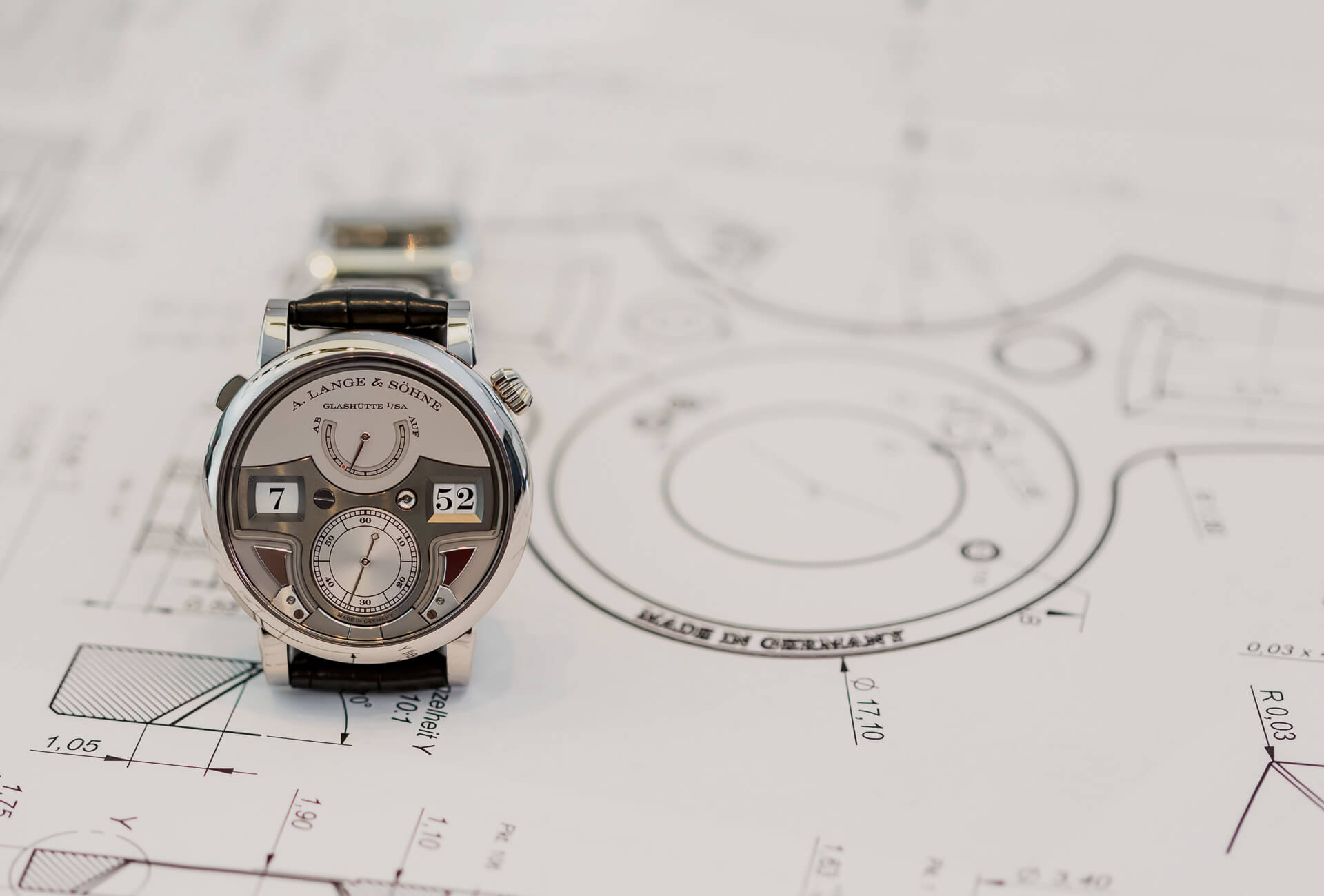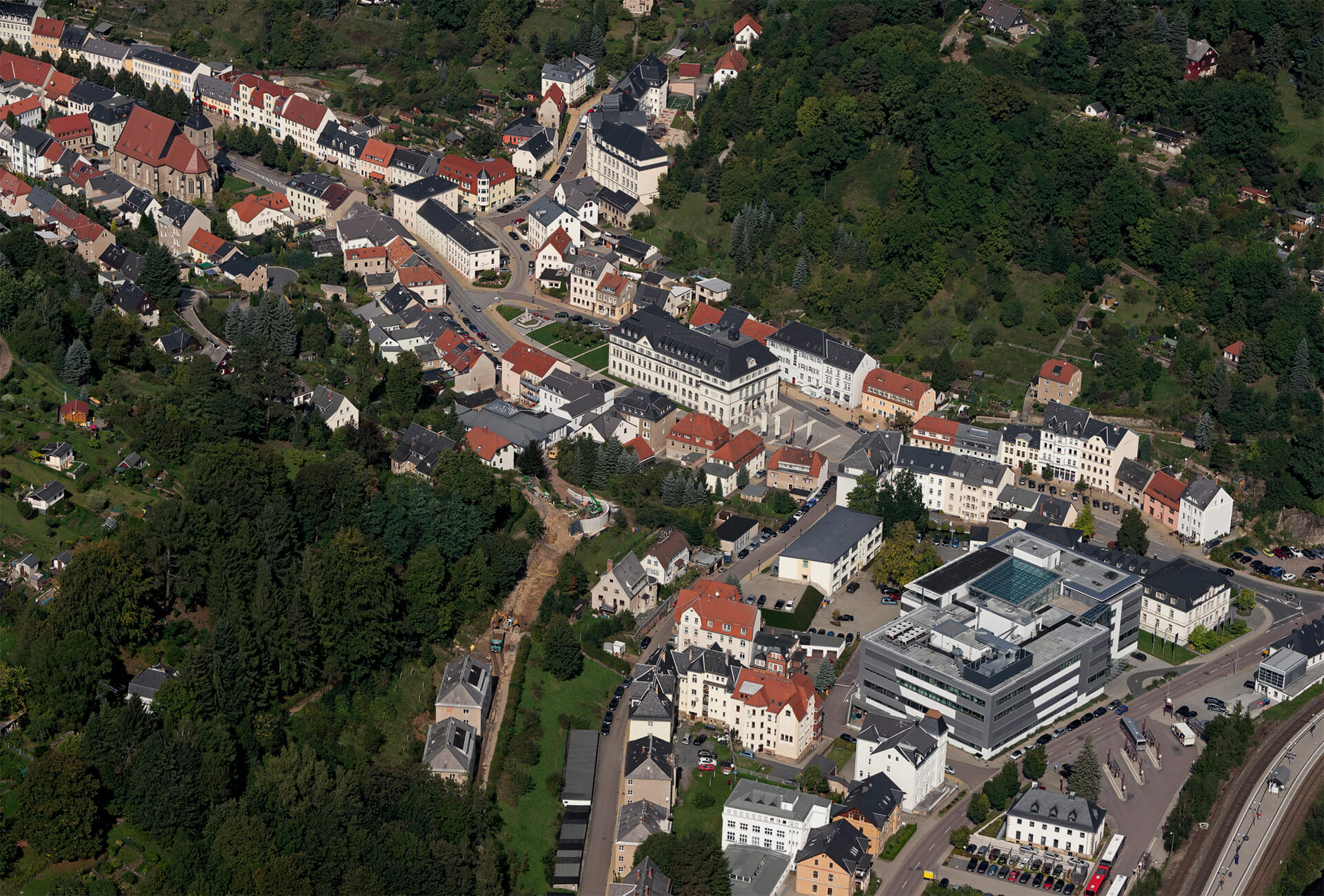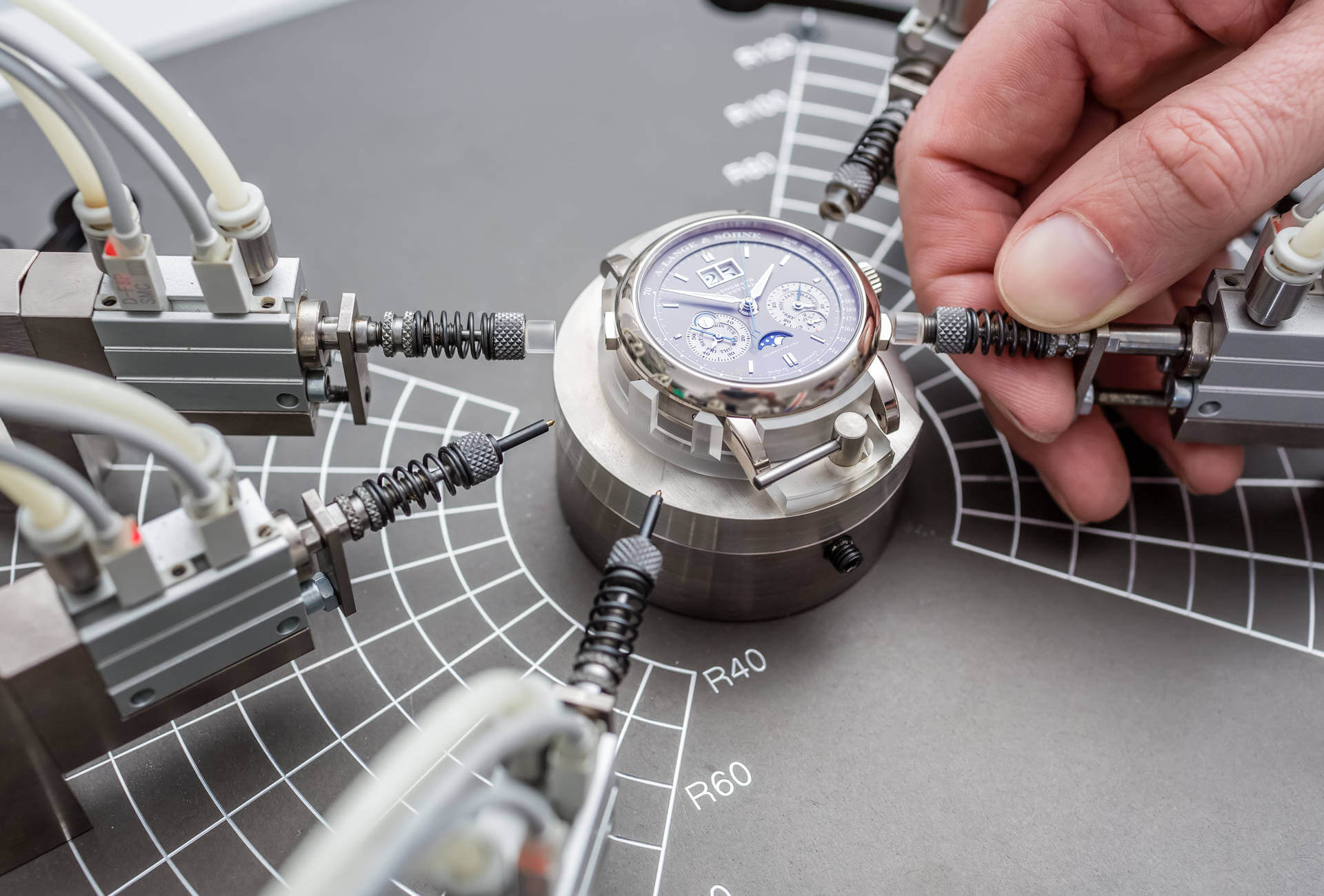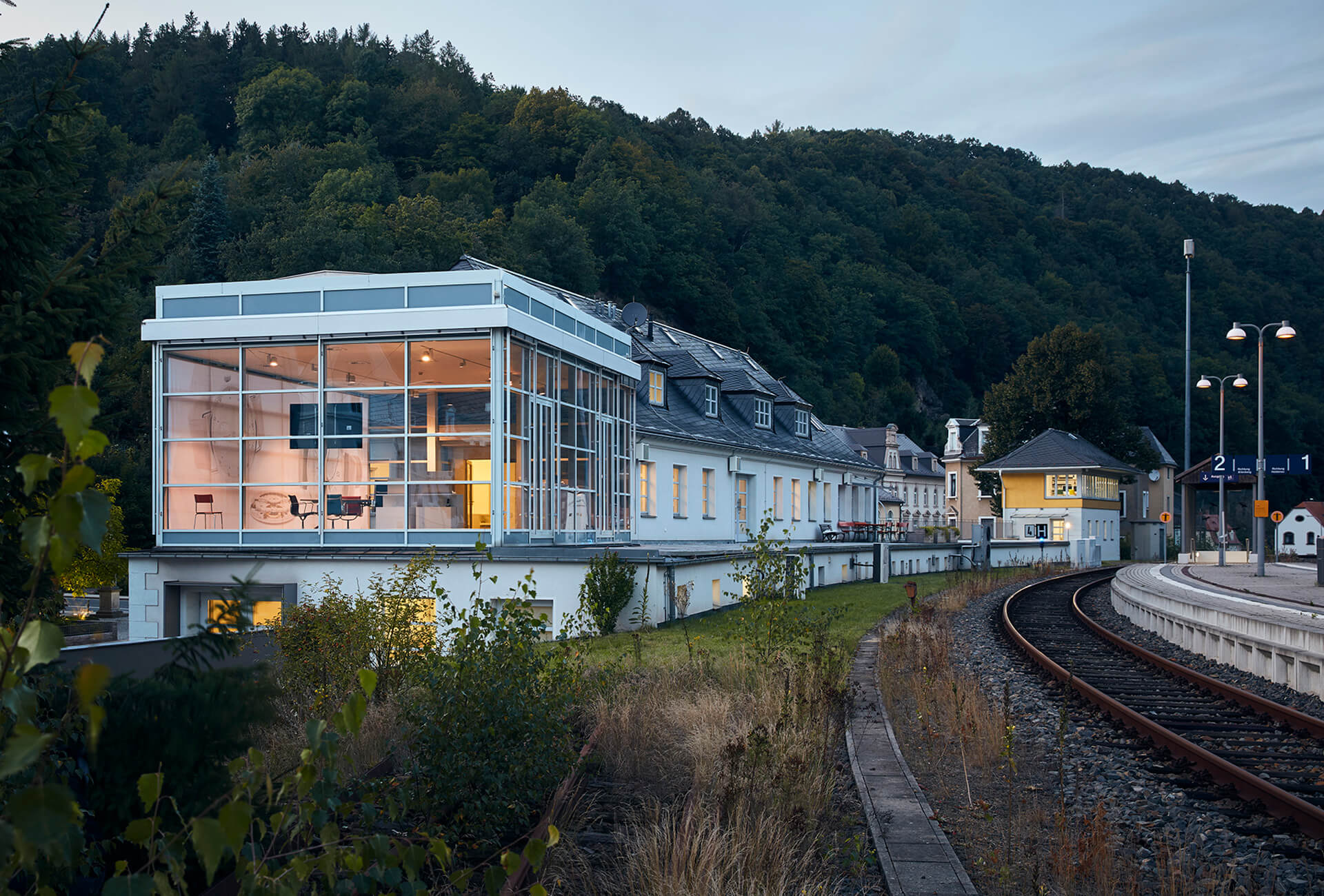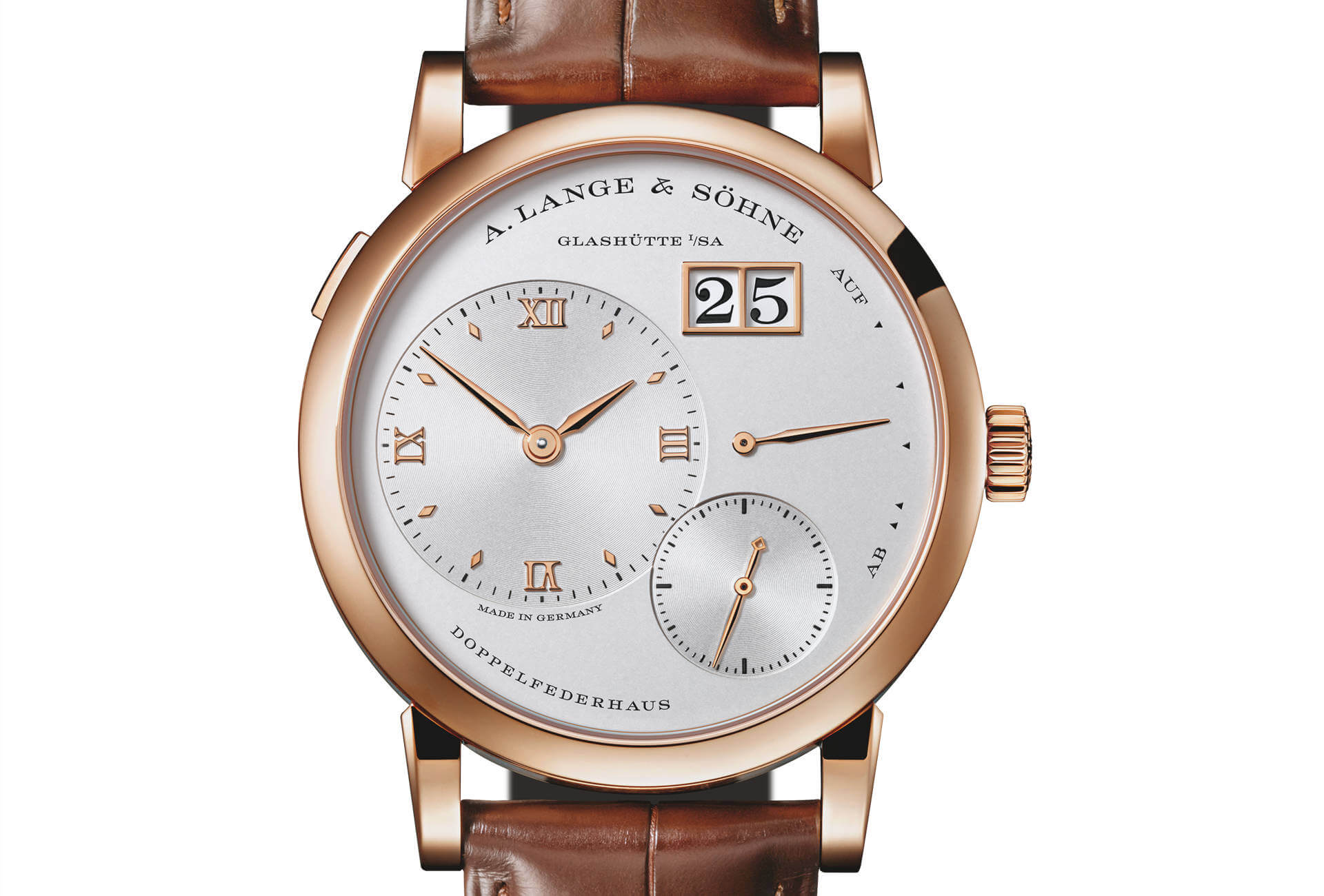No need to go peering down side streets in search of Glashütte’s famed names. They’re right there in the centre, proudly exhibited like jewels in the crown. Moreover, they provide a scaled-down replica of the power play within the industry at large. No visitor to the town – whose economy and the jobs of its 7,000-strong population are entirely geared towards watchmaking – could miss the two giants staring each other down. First to come into view, Glashütte Original dominates Altenberger Strasse with its glass monolith. A. Lange & Söhne’s historical buildings spring up all around, pushing out extensions as if to remind passers-by who’s the daddy. The contrasting architecture is indeed a reflection of the two firms’ development; it also encapsulates the competition waged between them, through their respective owners: Swatch Group added Glashütte Original to its portfolio in 2000 while Richemont bought A. Lange & Söhne in… 2000. Coincidence? It’s fair to assume that the reason the two multinationals simultaneously peered into the cradle of German watchmaking is that Glashütte hadn’t said its last word. And hasn’t stopped talking since!
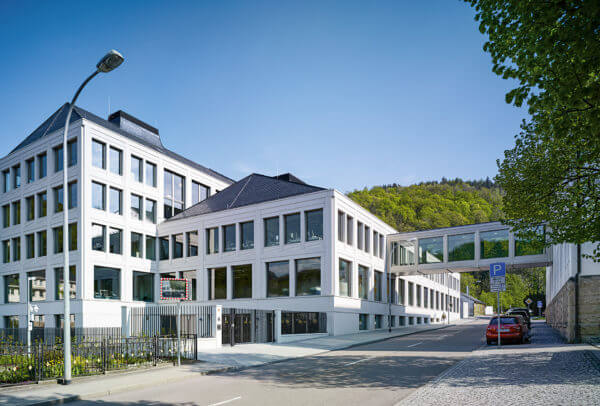
A. Lange & Söhne, the patriarch
The name of Ferdinand Adolph Lange (1815-1875), or that of his great-grandson Walter Lange (1924-2017), invariably comes up in conversation. If all roads lead to Rome, it’s equally true that in Glashütte all roads converge on A. Lange & Söhne (including the one named after the family). The Langes not only introduced watchmaking to the town in 1845; they also revived it after the Berlin Wall came down, at a time when the mechanical watch was hardly flavour of the month. The result is a perfect osmosis between the firm and its birthplace. As we tour the different companies, it becomes clear that anyone involved in watchmaking in Glashütte, which really means just about anyone of working age, has at some point or other been employed by A. Lange & Söhne, whose ability to command the interest of the country’s political dignitaries is unique. For proof, in 2015 Angela Merkel in person cut the ribbon at the new manufacturing facilities of a brand that is virtually a part of national heritage.
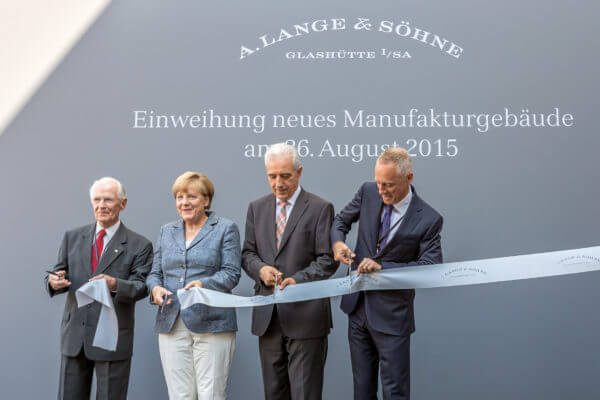
The Chancellor’s visit remains a source of immense pride for A. Lange & Söhne. At the height of its glory, the Lange name was renowned well beyond Saxony and even Germany as a whole, and its progress has been equally astounding since its revival some thirty years ago. “Until its expropriation in 1945, A. Lange & Söhne had always been a family firm,” Chief Executive Wilhelm Schmid explains, “and it was in this spirit that Walter Lange registered the company name anew in 1990. He also wanted the brand to reunite with its past. This meant proving our expertise and so four years later, when ETA was the dominant name in watch movements, A. Lange & Söhne came out with four new calibres, from the most simple to the most complicated. No-one saw that coming.” One of these watches, the Lange 1, was instrumental in confirming the brand was back and that it was a force to be reckoned with – and this was just the beginning. Since then, A. Lange & Söhne has developed no fewer than 50 in-house calibres. Production stands at around 6,000 watches a year, which retail through 220 points of sale, 17 of which are own-name stores. The brand currently employs 750 staff, including 650 in Glashütte. Because we all know there is no place like home.
Glashütte Original, hard at work
A. Lange & Söhne reprised its activity on the back of an already well-known and respected name. Not so Glashütte Original, whose previous incarnation had been as GUB, short for VEB Glashütter Uhrenbetrieb, the State-owned enterprise formed in 1951 from the fusion of six local watchmaking firms. Unsurprisingly, after forty years under State control, GUB was hardly a model of efficiency or competitivity. “Glashütte’s other watch firms were able to start from scratch,” says Gitte Hammerstöm of Glashütte Original. “whereas we were labelled an East German brand and had to contend with the difficulties this implied in terms of image. After the fall of the Berlin Wall, it was another four years before a buyer put in a bid. And one of the first things they did was to buy back all the stocks of GUB watches. It was about making a clean sweep of the past.”
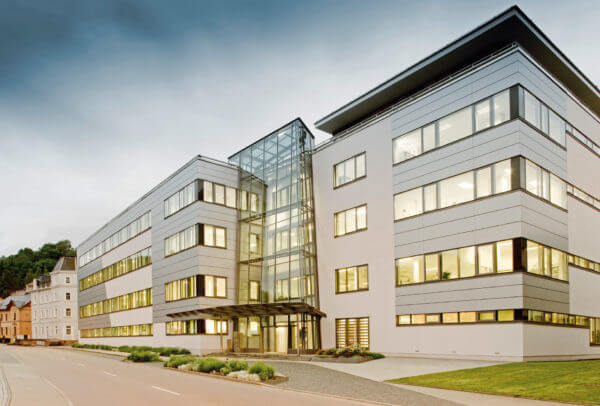
The workforce was slashed from more than 2,000 people to just 72. They had the arduous task of proving the firm had potential worth defending – and a tour of the production site shows they delivered beyond expectations. By including a perpetual calendar flying tourbillon priced at almost DM 300,000 among its first new-era launches, Glashütte Original left observers in no doubt that GUB was well and truly in the past. The Senator line followed soon after, proof that the brand (which first added “Original” to its name in 1916 to distinguish itself from the countless imitations) was slowly but steadily moving its production upscale. This return to orbit is all the more spectacular knowing that Glashütte Original now produces 95% of its components itself, including balance springs, and even has its own dialmaker, Deutsche Zifferblatt Manufaktur in Pforzheim. The company runs its own school inside the Deutsches Uhrenmuseum Glashütte; in fact the museum building, which was recently renovated with funding from Swatch Group, once housed the town’s renowned watchmaking school. Whether still learning their trade or already part of the hive of activity inside the rigorously organised production unit, the number of young people is another remarkable feature of the town. Glashütte has the future in its sights.








